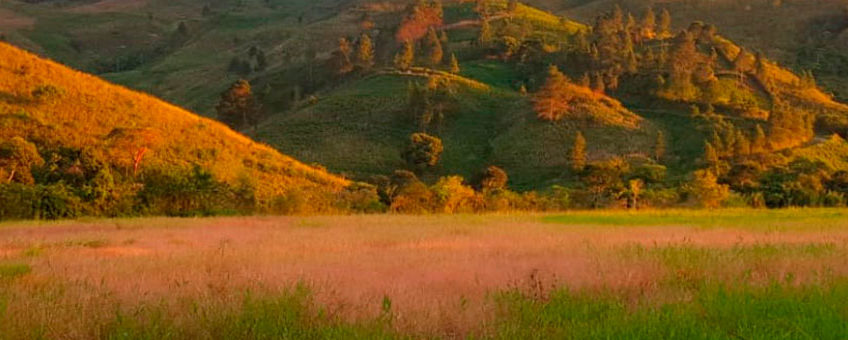- Project implemented in Honduras identifies key actors to drive the issue and select pilot sites to develop relevant studies
Thanks to financial support from Germany’s International Climate Initiative (IKI), a project is being implemented that will help Honduras and four other countries (Indonesia, Rwanda, Uganda and Peru) to incorporate the potential of on-farm trees in the implementation of the National Biodiversity Strategy, which is mandated to transfer the goals of the United Nations Convention on Biological Diversity (UNCBD) known as “Aichi” to the national context.
The project has a duration of four years (2018-2022) and was designed by a consortium of institutions led by the World Agroforestry Centre (ICRAF) and composed of CATIE (Tropical Agricultural Research and Higher Education Center), the International Union for Conservation of Nature (IUCN), the Centre for International Forestry Research (CIFOR), George-August University in Gottingen and Leibnitz University in Hanover, both in Germany.
According to Edwin Garcia, coordinator of the CATIE-Honduras project, the recent meeting of the United Nations Convention for the Conservation of Biodiversity (UNCBD), which included the 14th meeting of the Conference of the Parties (COP14) called on decision-makers from more than 190 countries present to intensify efforts to halt biodiversity loss and protect ecosystems that support human food, water security and health.
“One of the important discussions is to find innovative alternatives for incorporating biodiversity into the core sectors of national economies, including agriculture. As forests are shrinking, and also the ecosystem services they provide, efforts must be made to restore some of these vital services on agricultural lands,” he explained.
For Garcia, trees on farm play a key role in providing some of the services that forests provide, such as landscape biodiversity through in situ conservation, connectivity of fragmented wild habitats, conserving soil biodiversity and agrobiodiversity. As well as benefits for climate change mitigation and adaptation through carbon sequestration, and income diversification.
“Aichi’s target 7 stipulates that by 2020 the areas of agriculture, aquaculture and forestry are managed in a sustainable manner, which supports biodiversity conservation. However, this goal is not well represented in national biodiversity strategies and action plans. For this reason, the Trees on the Farm project proposes that trees on the farm be included as one of the indicators to measure and monitor the progress of agricultural landscapes towards sustainable management,” García said.
In Honduras, the project is in the process of identifying key actors to drive the issue and select pilot sites to develop relevant studies.
Garcia indicated that CATIE along with the Biodiversity Directorate of the Ministry of Environment and Natural Resources (DIBio-Mi Ambienete), focal point of the project in the country, visited the area of Trojes, El Paraíso, as this is one of the potential sites for the project.
During this visit a mapping of actors was developed and farms were visited. Afterwards, a series of bilateral meetings were held with some of the key actors in the territory, including meetings with MiAmbiente officials from the Ministry of Agriculture and Livestock (SAG), the National Institute of Forest Conservation (ICF) and the PROGRESA program, executed by SwissContact, who promote the cocoa sector in the area. All the actors contacted expressed their interest in the project and made themselves available to participate in its activities.
Also, the meeting of the Food Security Committee of El Paraíso was used to socialize the project. This event was attended by about 16 people representing various sectors in the area, including the municipal mayor of Danlí, and the National Director of the Technical Unit for Food and Nutritional Security (UTSAN).
Edwin Garcia
Proyecto IKI-TonF-Honduras
egarcia@catie.ac.cr

